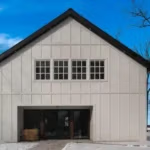The Perfect Underlayment for Your Metal Roof Installation
When installing a new metal roof or replacing an existing one, the underlayment you choose plays a crucial role in your roof’s long-term performance. At Riddick Roofing, we’ve seen firsthand how the right underlayment can mean the difference between a roof that lasts decades and one that develops problems within years.
Underlayment serves as your roof’s backup protection system. It’s installed directly over your roof decking (typically plywood or OSB) and underneath your metal roofing material, creating an additional moisture barrier that protects your home from water damage.
Why Metal Roofs Need Special Underlayment Considerations
Metal roofing systems present unique challenges that standard underlayment materials might not handle effectively. The primary concern is heat buildup—metal roofs can reach temperatures of 150 °F or more on a sunny summer afternoon (U.S. Department of Energy). Your underlayment must therefore be engineered to withstand these high temperatures without degrading.
Additionally, metal roofs expand and contract with temperature changes, creating stress on the underlayment below. This is why selecting an underlayment specifically rated for metal roof applications is essential for optimal performance.

Key Factors to Evaluate Before Choosing
- Required moisture protection for your climate
- Local building-code requirements
- Roof pitch and complexity
- Project timeline and preferred installation method
- Recommendations from trusted local roofing professionals
Modern Underlayment Options for Metal Roofs
Self-Adhering Underlayments (Ice & Water Barriers)
Self-adhering underlayments represent the premium choice for metal-roof protection. Products such as Henry Blueskin RF200™ create a fully bonded, waterproof seal which is ideal for eaves, valleys, and other leak-prone areas.
Synthetic Underlayments
Synthetic underlayments have revolutionized the industry with their superior performance versus traditional felt. The National Roofing Contractors Association (NRCA) guidelines recommend high-temperature-rated synthetic sheets for architectural metal panel systems.
Key advantages include:
- Superior tear resistance
- Extended UV exposure windows
- Lightweight rolls that cover more area
- Textured, slip-resistant surfaces for installer safety
A recent comparison by Atlas Roofing shows synthetics resist rot, buckling, and moisture absorption far better than felt while remaining much lighter on the roof deck.
Why We Don’t Recommend Felt Underlayment
- Prone to tearing during installation
- Absorbs water, risking deck damage
- Heavier and harder to handle than synthetics
- Limited UV resistance
- Poor traction for installers
Temperature Considerations for Metal Roof Underlayments
Because metal skins transfer so much heat, always verify your chosen product carries a high-temperature rating (240 °F or higher) suitable for metal applications. Standard underlayments may soften, degrade, or fail when exposed to sustained high temperatures.
Installation Best Practices
- Follow manufacturer guidelines—deviating can void warranties.
- Use self-adhering membranes in high-risk zones even if synthetics are used elsewhere.
- Maintain proper overlaps to prevent water intrusion at seams.
- Allow for roof movement—metal expands and contracts significantly.
Making the Right Choice for Your Project
| Need | Best Option | Notes |
|---|---|---|
| Maximum protection | Self-adhering | Highest cost but best water seal |
| Balanced performance/cost | High-quality synthetic | Most popular choice |
| Extreme weather zones | Combination | Self-adhering at eaves & valleys, synthetic on field |
Professional Installation Matters
Even premium underlayment can fail if installed incorrectly. Partnering with experienced, certified metal-roof installers ensures every layer, from the deck to the panels, performs as designed.
Frequently Asked Questions
Is underlayment required for metal roofs?
Yes. Most building codes and manufacturer warranties mandate underlayment as backup protection.
Can I use the same underlayment for metal as asphalt shingles?
No. Metal generates far more heat; you need high-temperature-rated products.
What’s the difference between waterproof and water-resistant underlayments?
Self-adhering membranes create a waterproof seal; synthetic sheets are water-resistant but still breathe.
How long can underlayment remain exposed?
Check the product spec. Some synthetics allow up to 180 days of exposure, others less.
Conclusion
Cutting corners on underlayment can save a few dollars today but cost thousands later. Selecting a high-temperature, metal-rated underlayment, installed by professionals, protects your investment and ensures your new roof performs for decades.
Ready to discuss your metal-roof project? Contact Riddick Roofing today and let us help you choose the perfect underlayment for your home.





